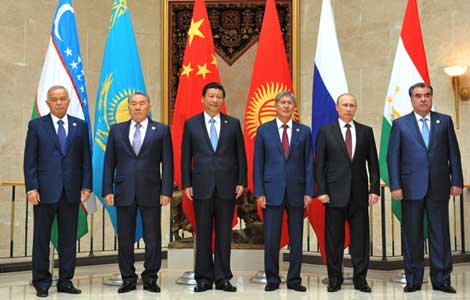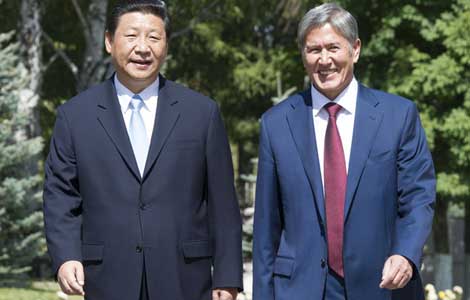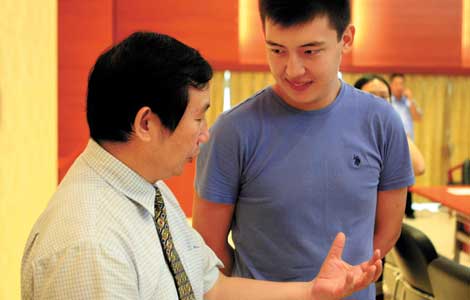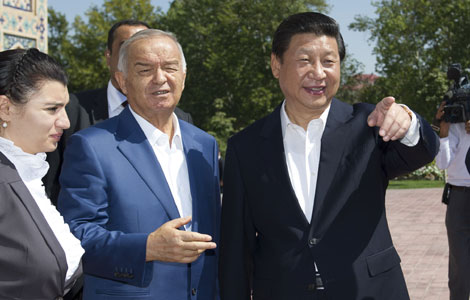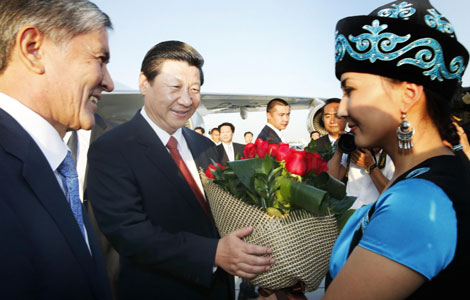S. Korea a model for innovation: experts
Updated: 2013-09-05 02:09
By Zheng Yangpeng (China Daily)
|
|||||||||
China has made progress but needs to further raise its competitiveness
President Xi Jinping has repeatedly stressed since taking office that the Chinese economy must be driven by innovation, even though China's State Intellectual Property Office granted more patents than any other patent office in the world last year.
In 2012, 1.02 trillion yuan ($163.73 billion) was spent on research and development in China. With a great deal of inventions and the budget to support them, what is the nation doing incorrectly?
Earlier this week, Chinese experts said the answer could be gained by looking more closely at South Korea.
In a Chinese Academy of Social Sciences ranking of national innovation competitiveness this year — based on 2011 statistics, such as per capita GDP and the amount of national expenditure on public education — South Korea ranked 5th among Group of 20 countries.
The CASS report last year, based on 2010 statistics, ranked South Korea 7th.
"It is not surprising that Western nations have an advantage in innovation competitiveness because they have had years of experience. But Chinese people should consider why South Korea is able to have made leaps in technological development in just a few years?” said Chen Dongsheng, a senior economist at CASS, at a ceremony on Tuesday to publicize the release of the report.
In the new report, China edged up one spot to 8th this year. Despite the modest gain, China has made progress, narrowing the gap in innovation competitiveness with advanced countries.
But Li Minrong, professor of management at Fujian Normal University and chief editor of the report, said there is no room for complacency.
In many areas, China lags behind the G20 in innovation competitiveness. These include the proportion of the national population that has received a tertiary education, overall labor productivity, number of Internet users per 1,000 people, the ratio of micro-small loans to GDP, average patent authorizations from scientists and engineers and per capita expenditure on public education.
By comparison, South Korea scores high in the proportion of research and development expenditure to GDP, proportion of R&D personnel among total employees and the amount of corporate R&D expenditure.
Experts said one major flaw in China's innovation competitiveness is its inability to transform research achievements into useful inventions and patents that corporations can monetize.
"The State has a huge science and technology development budget that even researchers in the United States envy. But most of the budget goes to colleges and universities. Scientific research usually remains stuck on academic papers or as patents that will never be used. Relatively little has been transformed into real, productive innovations,” said Han Jun, deputy director of the Development Research Center of the State Council, China's top economic think tank.
According to The Economist, researchers with good ideas will try to patent them in other countries.
Between 2005 and 2009, less than 5 percent of inventors in China sought to patent their ideas abroad. In the US, the figure was 27 percent; in Europe, more than 40 percent. The statistics indicate a poor quality of innovations in China.
Zhang Yuyan, director of the Institute of World Economics and Politics at CASS, said the institutional environment must encourage and reward innovation to raise China's innovation competitiveness.
Related Stories
Innovation, reform are more important than policies alone 2013-09-02 23:35
Xi calls for innovation push in Dalian 2013-08-30 07:03
Be innovative, Li tells graduates 2013-08-19 07:54
Schedule





